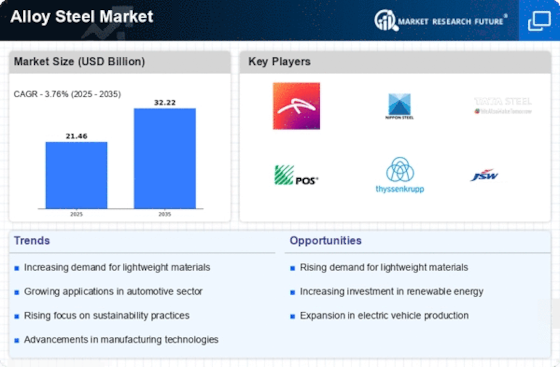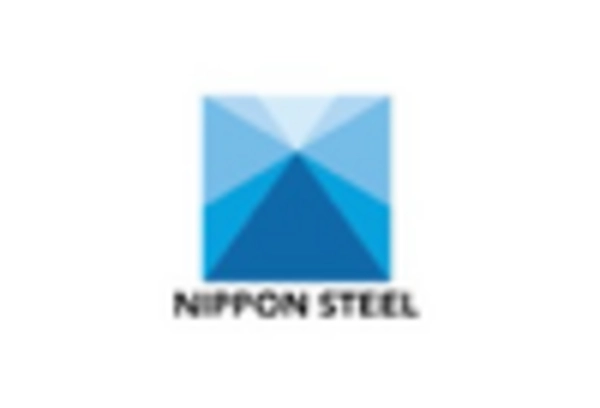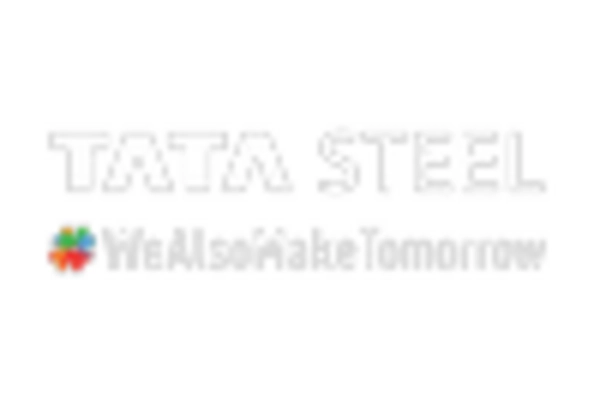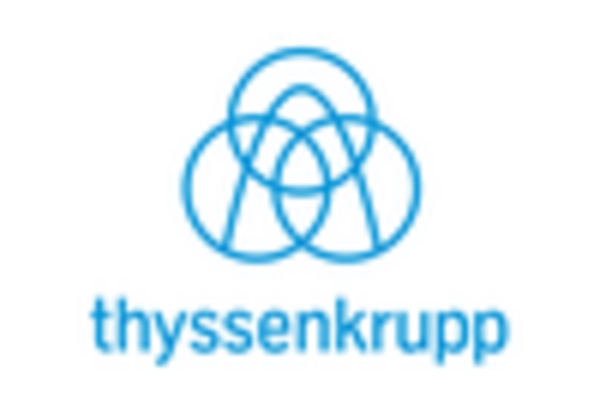The Alloy Steel Market is currently characterized by a dynamic competitive landscape, driven by increasing demand across various sectors such as automotive, construction, and energy. Key players are actively engaging in strategies that emphasize innovation, sustainability, and regional expansion to enhance their market positions. Notably, companies like ArcelorMittal (Luxembourg), Tata Steel Limited (India), and Nippon Steel Corporation (Japan) are at the forefront of these efforts, each adopting unique approaches to navigate the complexities of the market. ArcelorMittal, for instance, focuses on digital transformation and sustainability initiatives, which are becoming increasingly vital in the current market environment.
In terms of business tactics, companies are localizing manufacturing to reduce lead times and optimize supply chains, which is crucial in a moderately fragmented market. The competitive structure is shaped by the collective influence of these key players, who are leveraging their operational strengths to gain market share. This localized approach not only enhances efficiency but also allows for better responsiveness to regional demands, thereby solidifying their competitive edge.
In August 2025, Tata Steel Limited (India) announced a strategic partnership with a leading technology firm to enhance its production processes through AI integration. This move is significant as it positions Tata Steel to improve operational efficiency and reduce costs, aligning with the broader industry trend towards digitalization. The partnership is expected to yield substantial benefits in terms of productivity and sustainability, reinforcing Tata Steel's commitment to innovation.
Similarly, in September 2025, Nippon Steel Corporation (Japan) unveiled a new alloy steel product line designed specifically for the renewable energy sector. This strategic launch reflects the company's focus on sustainability and its intent to capture emerging market opportunities. By diversifying its product offerings, Nippon Steel is likely to strengthen its market presence and cater to the growing demand for eco-friendly materials.
Moreover, in July 2025, ArcelorMittal (Luxembourg) completed the acquisition of a regional steel manufacturer, which is anticipated to enhance its production capacity and market reach in Europe. This acquisition not only consolidates ArcelorMittal's position in the European market but also aligns with its strategy to expand its footprint in high-demand regions. Such strategic moves indicate a trend towards consolidation in the industry, as companies seek to bolster their competitive advantages.
As of October 2025, the Alloy Steel Market is witnessing a shift towards digitalization, sustainability, and AI integration, which are defining current competitive trends. Strategic alliances are increasingly shaping the landscape, enabling companies to pool resources and expertise. Looking ahead, competitive differentiation is likely to evolve from traditional price-based competition to a focus on innovation, technology, and supply chain reliability, as companies strive to meet the demands of a rapidly changing market.


















Leave a Comment